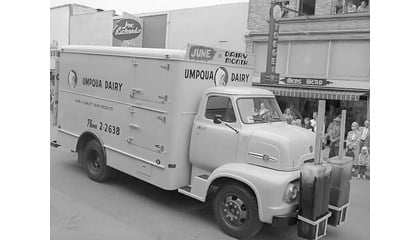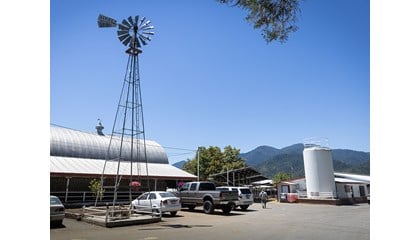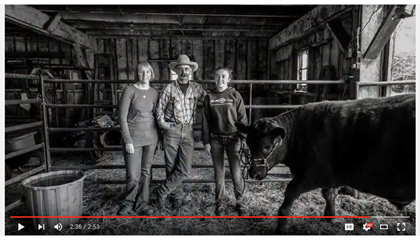How to Prepare for a Successful Calving Season

Calving season is one of the most labor-intensive (no pun intended) times for a farmer. Having the supplies on hand for any situation is essential because, just like human babies, they can come earlier than expected.
If you are new to raising cows or this is your first calving season, you need to know the difference between a heifer and a cow, as we mention these two terms throughout the page.
Heifer: A female cow that has not calved yet.
Cow: Refers to any bovine that has had a calf.
Why is springtime good for calving?
When a farmer chooses to time their calving season for spring, it allows them to wean and market the calves before the harsh elements of winter. This helps prevent the rise of winter feeding costs for baby cows.
Heifers and cows are able to forage pastures and consume a variety of nutrients while they are still nursing their growing calves.
Coastal Tip: There are a lot of plants in the Northwest that are perfectly suitable for grazing livestock. However, sprinkled throughout the region are toxic plants that can have disastrous effects on livestock. To read more about some of the more common toxic plants in the Pacific Northwest, check out our blog Protecting Your Livestock from Our Region's Toxic Plants.
Nutrition Should Top the Priority List
Whether you’re feeding a young female or a mature cow, the needs are the same. To ensure proper stamina for delivery, colostrum quality, and the health of the calf, give them enough feed. Body quality can deteriorate quickly as they near the time for delivery. Additionally, don’t forget about the salt blocks, supplements, and access to paddocks where grazing is possible (or hay if that’s not available). Read more in Giving Minerals and Supplements to Your Livestock.
Coastal Tip: Minerals can be corrosive to metals, so be sure to keep yours in the provided plastic tub or move it to a concrete, wood, or fiberglass container.
Featured Supplements
Vaccinations
Carefully look at how you can work to improve the health of mom and calf, keep costs low, and plan for the future. Also, talk to your vet about vaccines you can give on your own, including Bovine Respiratory Syncytial Virus, Bovine Viral Diarrhea Virus, as well as Infectious Bovine Rhinotracheitis.
The whole production system should be discussed, identifying critical control points where management could reduce risk and cost while improving herd health. Specifically, address management options to mitigate health problems that have historically been an issue. For more, check out Vaccinating Your Cattle.
Get Everything You Need BEFORE You Need It
Be sure you have everything you need on hand at least one to two months ahead of time. If you already have most of these items, give them a good inspection. Some items will need to be replaced or fixed to make this the best calving season ever.
Coastal tip: Replace light bulbs in your calving facility or where the calving will take place. This ensures you have enough light for the late-night births that are sure to happen.
Your list should include:
- Country Companion Milk Replacers
- 5-gallon Coastal bucket with lid
- Headlamp
- Colostrum supplement
- Vetericyn Super 7+ Navel Dip to help dry out the umbilical cord
- 3-quart nursing bottle with snap-on nipple
- J-Jelly lubricant
- Full-length rubber gloves
- Stockman Blank Calf Tags
- Vet Supplies
- Shop Towels
- Esophageal feeder (if the calf is too tired to use a bottle)
- Bovi-Shield Gold
- Calf jack or calving chains
- Electryx Heat Lamp
It's also a good idea to keep oxytocin and epinephrine on hand just in case you end up dealing with a breached calf (malpresentation).
Show Your Livestock Some Love
General Care
Cows and heifers need a lot of attention and care during calving season. After all, they’re eating and drinking more than usual, need extra supplements, and more. Double check that she has dry bedding and room to roam. Additionally, check on her at least three times a day as she gets closer to giving birth. Having your vet's number on speed dial is also essential.
General Care for Heifer
The Birthing Process
There are a lot of steps and know-how involved in the birthing process. To tackle calving season on your own, check out the Calving School Handbook from Oregon State University for a complete guide. We also have some quick tips to help you, mom, and calf weather the three stages of birth (dilation of the cervix, delivery, and shedding of the placenta).
Stage 1: The dilation of the cervix starts anywhere from four to 24 hours before a heifer/cow gives birth. During this time, uterine muscles become sensitive, and the rate and strength of contractions increase. For the most part, this stage can go unnoticed. However, the heifer/cow may isolate herself or show mild signs of discomfort. Towards the end of stage 1, a heifer/cow may elevate her tail, start switching it, and there may be an increase in discharge from the vagina.
Stage 2: This stage starts with the membranes and the baby calf coming into the pelvic canal and later being birthed. This stage can last two to four hours. For heifers, the pelvic opening will be smaller as the tissues have never been expanded. Watch carefully for a breach birth, legs going back, or twins.
Stage 3: The third and final stage occurs when the placenta is shed. This may take upwards of eight hours. If 12 hours have passed and the placenta has not fully shed, the membranes are considered retained. If this happens, call your vet to prevent damage to uterine health.
Things to Watch Out For
Even if the calf is not breached, they can have a hard time birthing due to the higher birth weight. If you mated your heifer/cow with a larger bull, it's common to experience problems during birth. Although being high weight can be genetic, the weather can also play a part in a heifer's/cow's weight. When it's cold outside, cows tend to eat more, causing a gain in weight.
The majority of calves get stuck at their shoulders. To help move the process along, apply plenty of lubricant to the birth canal. Then, secure the cow and attach OB chains (calf chains) to the calf's legs (between the hoof and the pastern joint). Once the chains are secure, pull with just enough pressure to ease the calf out without injury. Be patient. This part can take time.
Once the calf has been born, it may be too tired to nurse. In this case, having a nursing bottle (mentioned in the checklist above) is essential. If the calf is too tired to feed from the bottle, try an esophageal feeder.
Featured Birthing Supplies
Baby is Here!
The calf will have mucus built up in its nostrils and mouth. They will sneeze or cough it out. Then, mom will take over the cleaning. While it may take some time for the calf to get used to standing up and walking, they will quickly learn and head to mom for milk. As the calf learns to walk, squirt some colostrum out of each of mom’s nipples to get things primed. You may need to squirt a bit of milk on the calf’s lips and gently guide it closer. If there are no birth complications, it's okay to give the two some space. However, if the calf is having a hard time nursing or the mother is not producing milk, use a milk replacer.
Other feeding tips for calves include:
- Heat milk or milk replacer to 101–105 degrees F.
- If needed, give 2–4 quarts milk (1–1.5 lbs dry replacer) two times a day.
- Be sure there is clean water available at all times.
- Continually sanitize bottles, buckets, and feeders for the first few weeks.
- Give them chopped hay starting at 5–7 weeks.
Coastal tip: It takes about 5 days for a mother's milk production to regulate. If you have questions or concerns, call your vet. Additionally, call your vet if the calf has diarrhea, is unable to stand, has a temp over 104º F, or has a snotty nose, drooping ears, or other signs of illness.
Featured Products for Calf
Housing and Other Essentials
Livestock need shelter just like any other animal. But calves are even more susceptible to the cold and other weather-related issues. Always provide clean, dry bedding, control flies as much as possible, use a calf jacket or heater if outside air temperatures drop too low, and ensure there is enough ventilation. Additionally, control mud as much as possible with the following tips.
- Add wood shavings to paddocks and around troughs.
- Double-check gutters and downspouts to divert water away from alleyways as well as feeding and watering areas.
- Dig out the mud and add some rock where needed.
- Add a water bar (or two). Water bars, or water speed bumps, can be as simple as a 4-foot-long line of rocks or bricks buried partway into the ground with one end at a higher elevation than the bottom. The water will follow the speed bump down and flow out in the direction of the lower portion of the water bar.
Where they Roam
Cattle need ample amount of space to roam and graze. As your fields turn green, there are a few things you can do to protect your pasture, safeguard your animals, and make your life a lot easier in the process.
Carefully monitor the grass and soil. If the livestock consumes the bottom three inches of the grass, there’s a chance it might not grow back. If the ground is still too wet, horses and cattle can trample the soil and hinder any summertime growth.
You’ll know if your field is too soggy for grazing when you take a walk through it. If you can see your boot tread left behind with every step, then you can bet a set of hooves will do a number on the pasture. If you have a dry, well-drained area, separate it out and utilize it at different times of the season.
Coastal tip: Because grass grows faster in the spring, try to rotate your livestock more quickly now and less quickly in the summer.
If you have bare spots in your pasture, apply some seed. This will encourage new growth, fill in areas, and help keep the weeds down in summer. Apply seed to unoccupied pastures to encourage faster, more even growth.
Grass requires nutrients to grow, so it makes sense that fertilizing your pasture can help boost growth well into summer. Just don’t overdo it. Check your soil and determine the best fertilizer for your area. Even balancing your soil’s pH (a measure of acidity) can encourage grass growth.
Cattle can suffer from too much springtime grass. It’s called tetany, which occurs when there isn’t enough magnesium in the cow’s blood to eliminate the high levels of nitrate in the grass. This one’s easy to fix. Just give your cattle a magnesium supplement before and during their move to a new pasture.
Need to divide your pasture? Stop by your nearby Coastal and pick up some portable electric fencing. Want to build something more permanent? We have everything you need to build a sturdy fence, including wire fencing & netting, wire fence panels, gates & accessories, fence posts, fencing tools & accessories, and more. Plus, we carry supplements and feed to keep your grazers happy and healthy.
Housing and Other Essentials
Related Reading
Coastal Community
When to Choose Artificial Insemination
The small herd of registered shorthorns quietly gave little attention to the woman in the...
Read MoreAnimals
Are You Ready for a Milk Cow?
For many, the ideal homestead includes about a dozen chickens, a couple of goats, a...
Read MoreAnimals
A Beginners Guide to Raw Milk
There’s a trend among small farms and health-conscious families that has been making a big...
Read MoreAnimals
Livestock Butchering Options
Ask anyone who owns livestock about butchering and you’ll likely get a few opinions and...
Read MoreCoastal Spotlight: Raising Cows for Profit

Coastal Community
Coastal Journal
Coastal Journal - Backroads - is an occasional series about the people who live, work...
Read MoreCoastal Community
Visiting a Small-Town Dairy
Bobbi Frost, co-owner of Harrold’s Dairy in Creswell, Oregon invited the Coastal team out for...
Read More
Coastal Community
Insights from a Dairy Processor
Anytime you enjoy a tall glass of milk, bowl of ice cream, or a slice...
Read More
Coastal Community
Inside an Organic Dairy: Noble Dairy
About 20 minutes south of Grants Pass alongside the Applegate River, you’ll find Noble Dairy....
Read More
Coastal Community
Coastal Journal - 4H, FFA & Family
It takes a community For Maddie Neuschwander and her family, 4H and FFA are a...
Read More